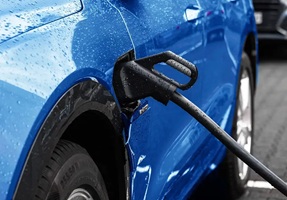


Protecting Your EV Charger: How to Prevent Overheating and Ensure Safe Charging
Protecting Your EV Charger: How to Prevent Overheating and Ensure Safe Charging
As electric vehicles (EVs) become more common, the importance of safe and reliable charging infrastructure grows. One often overlooked issue is charger overheating, which can reduce charging efficiency, damage equipment, and even create safety hazards. Understanding why China EV Chargers overheat and how to prevent it is essential for any EV owner or fleet manager.
EV charger overheating usually results from electrical, environmental, or hardware problems. Here are the main causes:
1. Shared or Overloaded Circuits
Many chargers require substantial electrical current—especially Level 2 units delivering 7kW or 11kW. When they share circuits with other power-hungry appliances like air conditioners or ovens, the total load can exceed safe limits. This causes wiring and components to heat up, risking performance issues and fire hazards.
2. Poor Ventilation
Chargers generate heat as they operate. Installing them in cramped spaces with little airflow—such as enclosed garages or utility closets—traps this heat, allowing internal temperatures to rise dangerously. Without proper ventilation, chargers may overheat, leading to shutdowns or damage.
3. Low-Quality Components
Not all chargers are built equally. Some budget models skimp on heat sinks, temperature sensors, or insulation. Without these protections, the charger can run hotter than safe limits, jeopardizing both safety and durability.
4. Harsh Environmental Conditions
Outdoor chargers exposed to direct sunlight, high temperatures, dust, rain, or humidity face extra challenges. If the unit lacks robust weatherproofing or shielding, heat buildup and component wear become serious risks.
Here are key steps to keep your charger cool, safe, and reliable:
1. Install a Dedicated Electrical Circuit
A dedicated circuit reserved solely for your EV charger prevents overload and heat buildup. This setup is often required by electrical codes for Level 2 chargers. A licensed electrician can evaluate your home’s wiring and install the proper circuit to protect your system.
2. Choose the Right Installation Location
Place your charger in a well-ventilated area indoors, away from enclosed corners or heat sources. For outdoor installations, select shaded spots or use weatherproof enclosures with ventilation. Proper airflow helps dissipate heat and maintain safe operating temperatures.
3. Invest in Certified, High-Quality Chargers
Opt for chargers from reputable manufacturers that meet international safety standards such as CE, TUV, or UL. Quality units often include thermal cutoffs, heat-resistant materials, and intelligent temperature monitoring to prevent overheating. Though upfront costs may be higher, they reduce risks and long-term expenses.
4. Regular Maintenance and Monitoring
Inspect your charger periodically for signs of wear, loose connections, or dust buildup. Clean vents and cooling fans as needed to maintain airflow. Some advanced chargers offer app-based temperature monitoring and automatic shutdown features for added protection.
If your charger feels unusually hot, frequently shuts off, or emits burning odors:
Stop charging immediately and unplug the unit.
Inspect for visible damage to cables or housing.
Verify the installation location isn’t trapping heat or exposed to direct sun.
Contact the manufacturer for warranty support if applicable.
Consult a certified electrician to examine your electrical system.
Never attempt internal repairs yourself unless you’re qualified.
Preventing EV charger overheating is vital for safety, equipment longevity, and optimal charging performance. By ensuring a dedicated circuit, selecting proper installation sites, choosing certified chargers, and maintaining your equipment, you can avoid heat-related issues. Advanced safety features like temperature sensors and automatic shutdowns provide an extra layer of protection.
With the right precautions, your EV charger will remain safe and efficient—helping you enjoy a reliable, worry-free electric driving experience.Know more about Google SEO Directory
